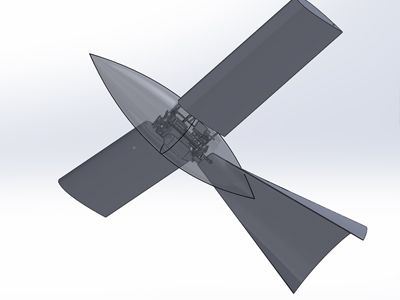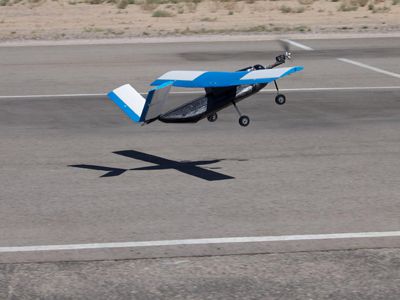 “Les Machines de L’Ile”, an amusement park in Nantes, France. (Mechanical Bird) Autonomous cluster flight of multiple satellites, an electric passenger aircraft, drones and anti-tank missiles are some of the projects that were presented at a student competition held at a recent major conference. The unique design competition, of projects by undergraduates, was held as part of the Israel Annual Conference on Aerospace Sciences. Ten student teams from the Technion entered the competition, along with student teams from Tel Aviv University, Ben Gurion University, and the Afeka Tel Aviv Academic College of Engineering.
“Les Machines de L’Ile”, an amusement park in Nantes, France. (Mechanical Bird) Autonomous cluster flight of multiple satellites, an electric passenger aircraft, drones and anti-tank missiles are some of the projects that were presented at a student competition held at a recent major conference. The unique design competition, of projects by undergraduates, was held as part of the Israel Annual Conference on Aerospace Sciences. Ten student teams from the Technion entered the competition, along with student teams from Tel Aviv University, Ben Gurion University, and the Afeka Tel Aviv Academic College of Engineering.
 The goal of the BIRDINATOR project was to understand the mechanical aspects of a bird’s flight capabilities in nature, and the construction of an artificial bird model as similar to the real bird as possible.“Most of the final-year projects at Technion’s Faculty of Aerospace Engineering are concerned with planning and development of aircrafts or missiles,” recounted Matan Meir, a faculty graduate. “We wanted to work on a different sort of project, one that required ‘out of the box’ thinking. This project, which is mostly a research, was mentored by Professor Gil Iosilevskii, from the Faculty of Aerospace Engineering. We wanted to understand how these birds manage to fly and how to mechanically recreate this ability. It’s important to emphasize that although there are machines that simulate the flapping of bird’s wings, it’s nothing like the complex movement of the wings by a bird in flight. The motion of a bird’s wing is very complex, much more than simple up and down movements.”“After numerous observations of birds in nature and films, and an in-depth study of biological articles on the subject, we managed to develop a mechanism that simulates the movement of a bird’s wing making use of all its elements. After we realized how birds do it, we became the first ones to build such a complex mechanism. By Implementing aircraft design tools and mechanical adjustments we designed an artificial bird capable of flapping flight for 10 minutes, a typical rate of three meters a second, at a speed range of 10-20 meters per second inhorizontal motion, carrying a load of 20 g and tolerant of wind gusts. The bird has an engine attached to its wings, and most of the maneuvering is carried out by the wings. We fly it like a model airplane.”“Concerning its design, we rose up to the challenge by developing a 3-D model and preparing drawings for production. We performed simulations with the MATLAB software system, which shows that we successfully simulated the flapping mechanism. We planned a mechanical bird that maintains all of the requirements we set for ourselves.”
The goal of the BIRDINATOR project was to understand the mechanical aspects of a bird’s flight capabilities in nature, and the construction of an artificial bird model as similar to the real bird as possible.“Most of the final-year projects at Technion’s Faculty of Aerospace Engineering are concerned with planning and development of aircrafts or missiles,” recounted Matan Meir, a faculty graduate. “We wanted to work on a different sort of project, one that required ‘out of the box’ thinking. This project, which is mostly a research, was mentored by Professor Gil Iosilevskii, from the Faculty of Aerospace Engineering. We wanted to understand how these birds manage to fly and how to mechanically recreate this ability. It’s important to emphasize that although there are machines that simulate the flapping of bird’s wings, it’s nothing like the complex movement of the wings by a bird in flight. The motion of a bird’s wing is very complex, much more than simple up and down movements.”“After numerous observations of birds in nature and films, and an in-depth study of biological articles on the subject, we managed to develop a mechanism that simulates the movement of a bird’s wing making use of all its elements. After we realized how birds do it, we became the first ones to build such a complex mechanism. By Implementing aircraft design tools and mechanical adjustments we designed an artificial bird capable of flapping flight for 10 minutes, a typical rate of three meters a second, at a speed range of 10-20 meters per second inhorizontal motion, carrying a load of 20 g and tolerant of wind gusts. The bird has an engine attached to its wings, and most of the maneuvering is carried out by the wings. We fly it like a model airplane.”“Concerning its design, we rose up to the challenge by developing a 3-D model and preparing drawings for production. We performed simulations with the MATLAB software system, which shows that we successfully simulated the flapping mechanism. We planned a mechanical bird that maintains all of the requirements we set for ourselves.”

MAZELTOV – a drone that Technion presented at the DBF (Design/ Built/ Fly) International Student Competition
The 54th Israel Annual Conference on Aerospace Sciences attracted some 500 engineers, scientists and experts in the field of aerospace from Israel and abroad. During the conference, participants were presented with new research results, the latest technological achievements, and future developments. The conference was organized by the Technion, Tel Aviv University, Ben Gurion University, Israel Aerospace Industries, Rafael, Israel Military Industries, Elbit, Israel Society of Aeronautics and Astronautics, and the Israel Defense Ministry.
Mechanical Bird







